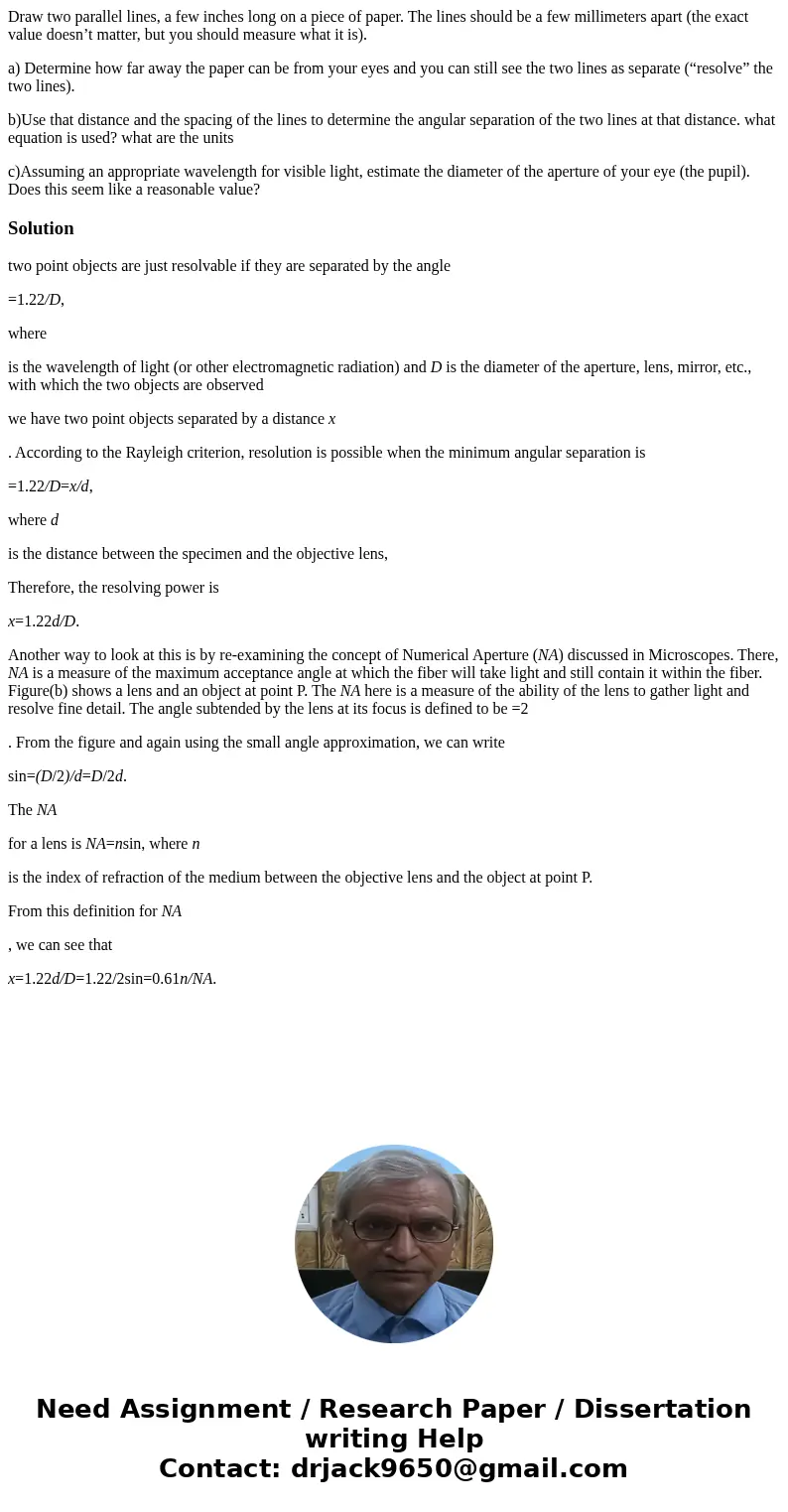Draw two parallel lines a few inches long on a piece of pape
Draw two parallel lines, a few inches long on a piece of paper. The lines should be a few millimeters apart (the exact value doesn’t matter, but you should measure what it is).
a) Determine how far away the paper can be from your eyes and you can still see the two lines as separate (“resolve” the two lines).
b)Use that distance and the spacing of the lines to determine the angular separation of the two lines at that distance. what equation is used? what are the units
c)Assuming an appropriate wavelength for visible light, estimate the diameter of the aperture of your eye (the pupil). Does this seem like a reasonable value?
Solution
two point objects are just resolvable if they are separated by the angle
=1.22/D,
where
is the wavelength of light (or other electromagnetic radiation) and D is the diameter of the aperture, lens, mirror, etc., with which the two objects are observed
we have two point objects separated by a distance x
. According to the Rayleigh criterion, resolution is possible when the minimum angular separation is
=1.22/D=x/d,
where d
is the distance between the specimen and the objective lens,
Therefore, the resolving power is
x=1.22d/D.
Another way to look at this is by re-examining the concept of Numerical Aperture (NA) discussed in Microscopes. There, NA is a measure of the maximum acceptance angle at which the fiber will take light and still contain it within the fiber. Figure(b) shows a lens and an object at point P. The NA here is a measure of the ability of the lens to gather light and resolve fine detail. The angle subtended by the lens at its focus is defined to be =2
. From the figure and again using the small angle approximation, we can write
sin=(D/2)/d=D/2d.
The NA
for a lens is NA=nsin, where n
is the index of refraction of the medium between the objective lens and the object at point P.
From this definition for NA
, we can see that
x=1.22d/D=1.22/2sin=0.61n/NA.

 Homework Sourse
Homework Sourse